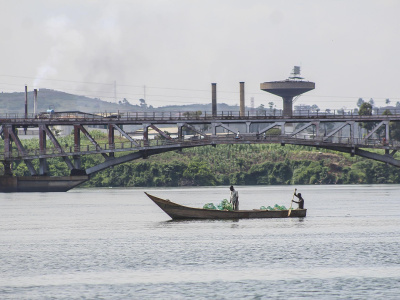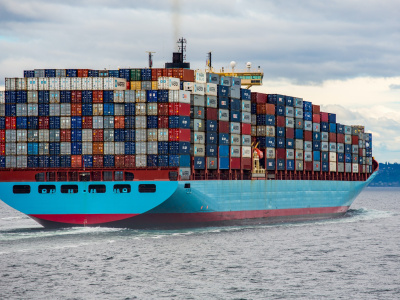
The African Continental Free Trade Area: The hard work starts now
At the recent African Union (AU) Summit, three more African countries signed the Agreement Establishing the African Continental Free Trade Area (AfCFTA), while at least three others deposited instruments of ratification of the Agreement. Outgoing AU Chair, President Paul Kagame of Rwanda, announced in his opening address that entry into force of the AfCFTA Agreement is “only weeks away”, while the AU Trade and Industry Commissioner said he expects the AfCFTA will be formally launched at an AU Summit in Niger in July.
This political momentum around the AfCFTA is encouraging for those who believe economic integration can promote structural transformation across Africa. But there is plenty still to be done in 2019, and beyond, before the AfCFTA becomes a reality for African citizens and businesses. In fact, the hard work has only just begun.
The next steps on the long road to African integration
For one thing, the AfCFTA Agreement still needs to be fleshed out. Although most AU member states have now signed the Agreement (Africa’s largest economy, Nigeria, remains a notable hold-out), they still haven’t finalised the details needed to allow the AfCFTA to work. These include the tariff concessions that specify which products can be traded duty-free and the rules of origin that determine whether a traded product really comes from a member state and can therefore benefit from preferential market access under the Agreement.
Last December, African trade ministers agreed on a roadmap for concluding the Agreement. According to this roadmap, member states would agree on rules of origin by mid-2019, and submit their tariff concessions for goods and services by January 2020. However, at the AU Summit, member states decided to bring the deadline for submitting their tariff concessions forward to July 2019.
They probably did this so that the outstanding elements required for a functioning AfCFTA, including tariff schedules and rules of origin, would be ready for adoption at the AU Summit in July. The Summit should provide an opportunity for member states to deposit the remaining instruments of ratification required to trigger entry into force of the AfCFTA Agreement (which occurs after 22 member states have deposited their instruments of ratification). If the AfCFTA rules of origin, tariff schedules and other necessary elements are adopted at that point, member states will be able to start trading goods with one another under the AfCFTA shortly thereafter. Full implementation of the AfCFTA would then be possible from January 2020, once the services commitments are adopted.
This sequencing should help avoid some of the legal uncertainty that would transpire if the AfCFTA Agreement came into force before rules of origin and tariff schedules had been adopted. Nonetheless, the timeline is very ambitious. Rules of origin negotiations can take time. In the context of the Tripartite Free Trade Area in Eastern and Southern Africa such negotiations have taken years and are still not complete. Moreover, many African countries have little experience negotiating trade in services. Now they will have to do so while making progress on the AfCFTA phase two negotiations on investment, competition and intellectual property.
Negotiations are the easy part, implementation is the real challenge
If the AfCFTA is to achieve its objectives of boosting intra-African trade and industrial competitiveness across the continent, African countries must not only conclude and ratify the AfCFTA Agreement, they must also implement it. That means translating the Agreement into national law and ensuring that all relevant government agencies are prepared for and able to apply the required changes, and that they actually do so. These steps cannot be taken for granted
For one reason or another, many African countries have not properly implemented their regional trade agreements. As a result, intra-regional trade in Africa is still plagued by high tariffs, numerous non-tariff barriers and other complications arising from the patchwork of partially implemented regional trade agreements with overlapping memberships.
The AfCFTA is meant to resolve the challenge of overlapping memberships. But instead of replacing existing regional trading agreements, it adds another (continent-wide) trade agreement to the mix. So to achieve African economic integration, African states now have to implement the AfCFTA and step up implementation of their existing regional trade agreements.
Continental ambitions and domestic politics
Our work on regional integration in Africa has found that regional integration initiatives like the AfCFTA are more likely to be fully implemented by member states when they help further the interests of the ruling elites in those states. National political dynamics will therefore have an important bearing on the prospects for AfCFTA implementation.
So too will the many African elections in 2019, as changes in political leadership could influence how member states approach implementation. Ethiopia, for instance, has been reluctant to join any regional trade agreements in the past, but is now taking steps towards ratifying the AfCFTA. This appears to be at least partly due to the reformist approach of the country’s new leadership.
For those supporting AfCFTA implementation, a close analysis of the political dynamics within African countries, and of the interests and motivations of their ruling elites, can provide a better understanding of whether rhetorical support for the AfCFTA is likely to be followed up by implementation, or if it is just signalling. Such analysis can also provide a clear picture of the room for manoeuvre in terms of strategies to promote AfCFTA implementation and overcome potential obstacles. This thinking inspired our new paper on how domestic political economy dynamics in Nigeria and South Africa shape the way Africa’s two economic giants engage with the AfCFTA.
The fate of the AfCFTA depends on Africa’s leaders
Politically-savvy support from development partners can help AfCFTA implementation, but the fate of the AfCFTA ultimately depends on African leaders following through on the high expectations they have set for the AfCFTA. They must show leadership and commitment on implementing the AfCFTA (and their other regional trade agreements), and not just under the bright lights of AU Summits. This also means engaging meaningfully with the private sector and African citizenry – they are the ultimate intended beneficiaries of all this, after all. This will be crucial to ensure the AfCFTA avoids the implementation gap into which so many African agreements have fallen.
The credibility of African integration is at stake. Complacency is not an option.
The views expressed are those of the author and not necessarily those of ECDPM.





